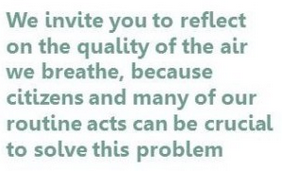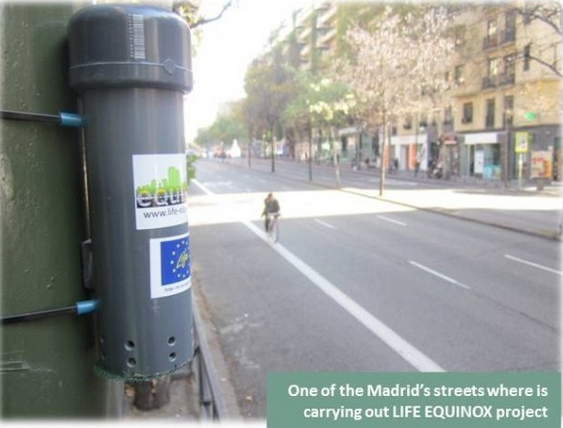At this moment you are visiting our blog and after reading the title of this post, you are thinking about finding a text based on the current social context, where the word “change” appears again and again. Not this time. Here, we want to present our skills and it is time for the environmental chapter today. And with the title of this post, we would like to defend the need for changing the air. Literally speaking.

News about air pollution appears in the media, as headlines, more often than we would like during the last months. But, what does the term mean exactly? If we begin with the definition, air pollution occurs when the air contains gases, dust, fumes or odour in harmful amounts. That is, amounts which could be harmful to the health or comfort of humans and animals, or which could cause damage to plants and materials. And if we finish with the epilogue, nowadays the World Health Organization is qualifying it as a public health emergency.
Although it is known the self-purification capacity of the air from natural resources, anthropogenic atmospheric pollutants concentration is increasing at a higher rate, especially during recent years, and the limits are being exceeded. For example, in large cities, current levels of air pollution cause direct (and serious) damages to the health of humans, animals and plants that live in it. This happens in Madrid, with its necessary traffic restrictions due to the frequent pollution peaks, or even in Valladolid, which could have suffered around a hundred days of poor air quality in 2015 (if we consider the limits established by WHO and taking into account the parameters which define it). And we can’t forget other cities around the world, where the situation becomes more troubling due to the high levels of pollution. New Delhi and Tiananmen photos are kept in our mind, always associated with a big gray cloud.

For this reason, environmental pollution is now one of the biggest technological, economic and social challenge, to be overcome by the society. In fact, CARTIF is working actively on the concept “Air Quality” and some technologies are being developed. A formulation design to be applied on asphalt paving for nitrogen oxide removal in urban environments is an example, as well as a new analytical technique for the quantification of dioxin in air. Moreover, we are committed to innovation, and we are working on proposals that include Nature Based solutions, that is, solutions that are inspired by, supported by or copied from nature, where ecosystem services could be used, for example, to reduce the nitrogen oxides concentration and to conserve and expand carbon sinks. Even to act as barriers to reduce particle air pollution and to regulate the humidity and temperature of the cities, improving, consequently, citizens well-being regard to health & comfort.
Let’s think about this issue, about the importance of the quality of the air we breathe, winds of change must necessarily reach. In our opinion, the formula for success is Research & Development & Awareness, and we bet (and work) on it.
And it is always important to remember that the role of people can be crucial to contribute to mitigate this problem, since motor vehicles are one of the largest sources of pollution.
Therefore, to choose options considered as sustainable mobility, like cycling, is an interesting alternative because, apart from improving the health of those who practice it, helps to keep air clean. Or car sharing to go to work. Or to include more, and better, green space in sustainable urban plans. It is also in our hands to be an active part of the solution… “Think globally, act locally”.
Laura Pablos and José Fermoso.
- Jeff Bezos reminded me of the importance of the carbon footprint - 17 September 2021
- Creating more liveable cities using nature - 13 September 2018
- Think green - 13 June 2017
